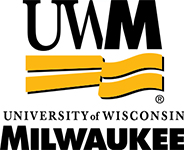Nebulized hypertonic saline attenuates acute lung injury following trauma and hemorrhagic shock via inhibition of matrix metalloproteinase-13. Crit Care Med 2012 Sep;40(9):2647-53
Date
06/27/2012Pubmed ID
22732292Pubmed Central ID
PMC3519396DOI
10.1097/CCM.0b013e3182592006Scopus ID
2-s2.0-84865495096 (requires institutional sign-in at Scopus site) 41 CitationsAbstract
OBJECTIVE: We hypothesized that aerosolized inhaled hypertonic saline given at the onset of resuscitation will decrease acute lung injury following hemorrhagic shock, by inhibiting the release of epithelial derived proinflammatory mediators.
DESIGN: Animal study.
SETTING: Animal-care facility procedure room in a medical center.
SUBJECTS: Adult male Sprague-Dawley rats.
INTERVENTIONS: Rats underwent hemorrhagic shock followed by 2 hrs of resuscitation and 1 hr of observation. In the study group, nebulized hypertonic saline was delivered at the end of the shock period and after 1 hr and 2 hrs of resuscitation.
MEASUREMENTS AND MAIN RESULTS: Shock provoked acute lung injury, which was attenuated with inhaled hypertonic saline (1.56 ± 0.2 mg protein/mL vs. 0.95 ± 0.3 mg protein/mL bronchoalveolar lavage fluid, shock vs. shock + hypertonic saline, p < .01). Nebulized hypertonic saline reduced inflammation (cytokine-induced neutrophil chemoattractant-1 accumulation in bronchoalveolar lavage fluid 5999 ± 1267 pg/mL vs. 3342 ± 859 pg/mL, shock vs. shock + hypertonic saline, p = .006). Additionally, nebulized hypertonic saline inhibited matrix -metalloproteinase-13 accumulation in the bronchoalveolar lavage fluid (1513 ± 337 pg/mL bronchoalveolar lavage fluid vs. 230 ± 19 pg/mL, shock vs. shock + hypertonic saline, p = .009) and pretreatment with a matrix metalloproteinase-13 inhibitor was sufficient to attenuate postshock acute lung injury (1.42 ± 0.09 mg/mL vs. 0.77 ± 0.23 mg/mL bronchoalveolar lavage protein, shock vs. shock + matrix metalloproteinase-13 inhibitor CL-82198, p = .002).
CONCLUSION: Inhaled hypertonic saline attenuates postshock acute lung injury by exerting an anti-inflammatory effect on the pulmonary epithelium, suggesting a new clinical strategy to treat acute lung injury/acute respiratory distress syndrome.
Author List
Wohlauer M, Moore EE, Silliman CC, Fragoso M, Gamboni F, Harr J, Accurso F, Wright F, Haenel J, Fullerton D, Banerjee AMESH terms used to index this publication - Major topics in bold
Acute Lung InjuryAdministration, Inhalation
Animals
Biopsy, Needle
Bronchoalveolar Lavage Fluid
Disease Models, Animal
Immunohistochemistry
Male
Matrix Metalloproteinase 13
Nebulizers and Vaporizers
Neutrophil Infiltration
Random Allocation
Rats
Rats, Sprague-Dawley
Saline Solution, Hypertonic
Sensitivity and Specificity
Shock, Hemorrhagic
Wounds and Injuries









